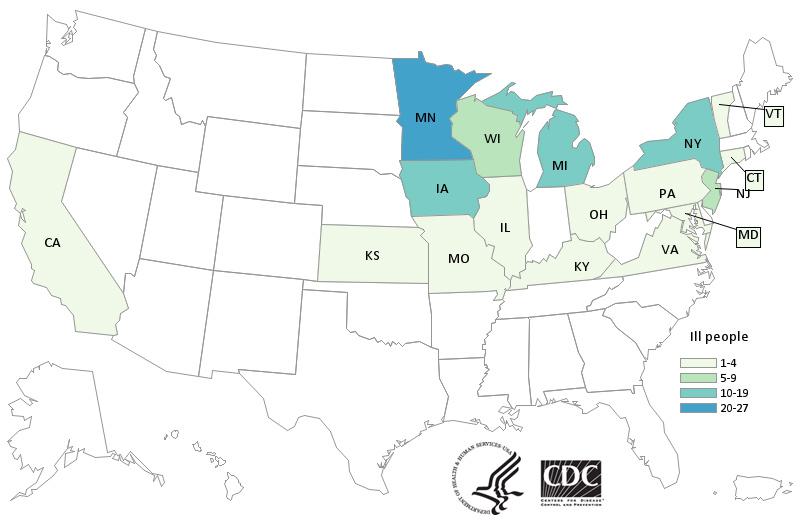In late Summer of 2020, Marler Clark investigated a Salmonella Enteritidis outbreak linked to peaches.
As of October 16, 2020, there had been 101 confirmed cases of Salmonella Enteritidis linked to the Prima Wawona peach recall. The CDC reported cases in 17 states: California (1), Connecticut (1), Iowa (11), Kansas (10), Kentucky (1), Maryland (1), Michigan (18), Minnesota, (27), Missouri (2), New Jersey (8), New York (14), Ohio (1), Pennsylvania (4), Vermont (1), Virginia (3) and Wisconsin (6).
People infected with the outbreak strain of Salmonella Enteritidis by state of residence, as of October 14, 2020 (n=101)

Individuals became sick between June 29, 2020 and August 27, 2020. Twenty eight individuals were hospitalized. No deaths were reported. Individuals who became ill were between 1 and 92 years of age, with the median age being 43. The majority of cases (64%) were female.
In Canada total, there were 57 confirmed cases of Salmonella Enteritidis illness linked to this outbreak in two provinces: Ontario (41) and Quebec (16). Individuals became sick between June and August 2020. Twelve individuals were hospitalized. No deaths were reported. Individuals who became ill were between 0 and 91 years of age. The majority of cases (60%) were female.
Whole genome sequencing analysis showed that an outbreak of Salmonella Enteritidis infections in Canada was related genetically to this outbreak in the United States. This means that people in both outbreaks were likely to share a common source of infection.
After collecting records from several grocery stores where the ill reported buying peaches, the FDA and regulatory officials determined that Wawona Packing Company, LLC, had distributed both loose and packaged peaches.
On August 22, 2002, Prima Wawona recalled bagged and bulk, or loose, peaches that they had supplied to stores nationwide. Please refer to the recalled list on the FDA's site. Recalled products are beyond their shelf life and should not longer be in stores.
As of October 16, 2020, this outbreak appears to be over.